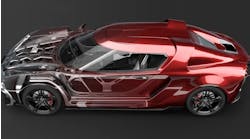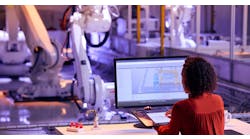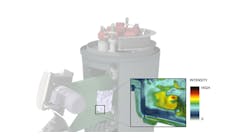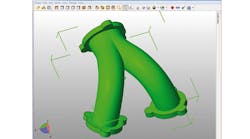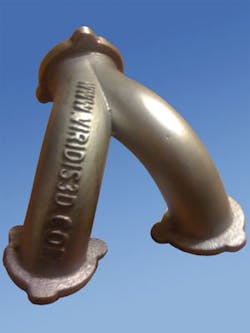Foundries make metal parts: they use sand and ceramic materials to make molds and cores to make those metal parts. Sand molds and cores are made by a variety of processes, from green sand to no-bake and beyond. Cores are made through a variety of processes, too, some with tooling and some by hand. Pretty much all the processes require some form of a solid pattern.
As time goes on, the tools that are used and the sophistication of the media continue to improve. Through all of these stages, quality continues to improve and cycle times continue to go down. 3D printing or “additive manufacturing” offers a few advantages to the old ways of making a metal part - sometimes making the metal part directly. How much more "foundry" could you get?
Many of the new 3D printing system are not much different than any other mold- or coremaking system, or a CNC machine to make patterns. And, there are several varieties of 3D printing. Here is a quick overview of how 3DP processes fit into a foundry environment:
1. 3D Printed Patterns: Think renboard, wood, or metal patterns. With many 3D printing technologies, this is the most accessible application. You, your pattern shop, or your customer, can design tooling from anywhere in the world, and you can print it out on demand.
Tooling can be made from a variety of composites, plastics, or metals. Turnaround time can be as short as a few hours from the time of receiving the files. Core boxes can be made the same way, sometimes simultaneously with the mold tooling. Most good foundries already know how to use a pattern board, so there isn't really a learning curve at all for implementation. If you don't want the equipment, get your pattern shop to pony up for the hardware.
2. Direct Pour Molds and Cores: Think cores without the core boxes, sand molds without the pattern boards. With 3D printing technologies that can make sand molds or cores directly out of the printer, you can skip the tooling entirely. (We have seen installations of equipment where a casting was produced from a new CAD file, after only seven hours.)
Printing the molds and cores lets a foundry make high-complexity and/or low-volume castings for much lower costs and much shorter cycle times. The materials are a little different than standard sands, so there is a little learning curve on the foundry side, but turning a new design in 24 hours without having to make tooling is worth the effort.
The Future is Now
3. Wax Patterns: Think, well, wax patterns. A few 3D printing technologies can make investment casting patterns that fit directly into standard processes. These are widely used for making jewelry, medical devices, and smaller models. The larger systems make parts that can be shelled, though burnout requirements may differ from traditional casting tools.
4. Direct Metal Techniques: Think "the future is now." From digital file to metal parts, with no intermediate steps. These technologies are still somewhat slow and expensive per part, but with industrial use and sponsored research the process capabilities of direct metal parts are improving steadily.
Soon, GE Aviation will be using 3DP parts in jet engines. Medical implants are already being made this way. A quick survey of recent "castings of the year" shows a trend towards high-complexity, feature-rich, thinner-wall castings. The direct metal techniques may not be the cheapest way to get there, but as technology continues to evolve, they just might be the best way.
Whether you are printing sand molds, ceramic cores, wax patterns for investment casting, or patterns for the mold shop, you are still making the same articles that foundries have made for centuries. Investing in new technology helps you to stay competitive.
Educating students to become familiar with 3D printing processes is a requirement now. For most systems, the operator training is equivalent to that for core room or sand lab employees. They need to be detail-oriented and observant, but they don't necessarily need an engineering degree. Foundry owners looking to give their employees new skills can take advantage of manufacturer- or industry-sponsored coursework to bring them up to speed.
Foundries should see 3D printing as another route to make metal parts. 3D printers can build patterns as fast or faster than many processes, and things become even more interesting if you think about replacing tooling cost and lead time altogether: You can 3D print a wax pattern for a +20-in. rotor in a few hours. Can you really find the tools, prep, and mold one complex part with traditional processes in just a few hours? Also, you can use the same printer to make the sand casting molds, patterns, and waxes just by swapping out the materials in the system.
If you’re using direct metal laser sintering technology you’re making finished metal parts, just through a different process. The 3D printer selectively melts metal powders to build up very complex shapes; completely bypassing tooling.
Foundries have always made metal parts. They've always used molds, cores, patterns, or waxes to do so. 3D printing offers a range of solutions for your foundry that can be implemented today as a value-added, quick-turn solution. At the heart of it, 3D printing is a new alternative process for metal parts manufacturing, and foundries have a wide range of processes for making metal parts already. 3D printing, or additive manufacturing, has progressed well past its roots of "rapid prototyping," and is being used to make more and more real durable parts every day.
Will Shambley is the president of Viridis3D LLC, developers of additive manufacturing technology for producing sand molds and cores. Learn more at www.viridis3d.com




